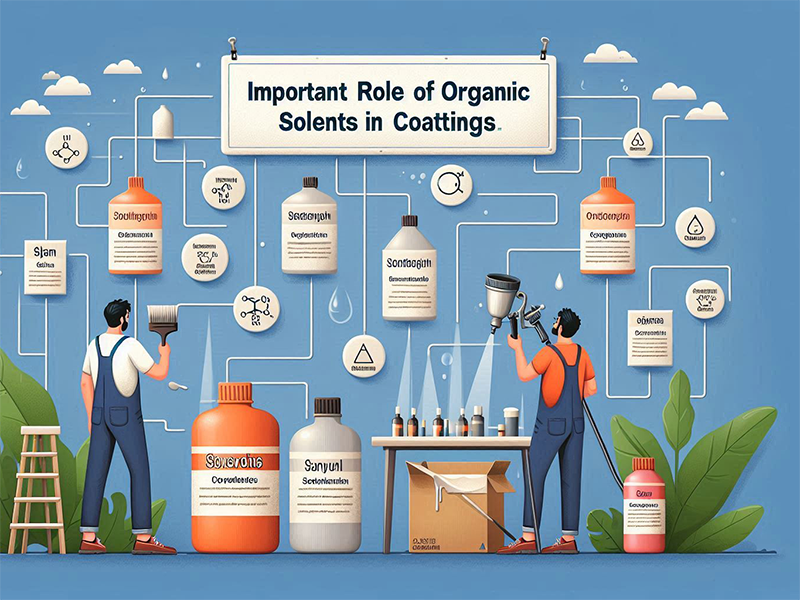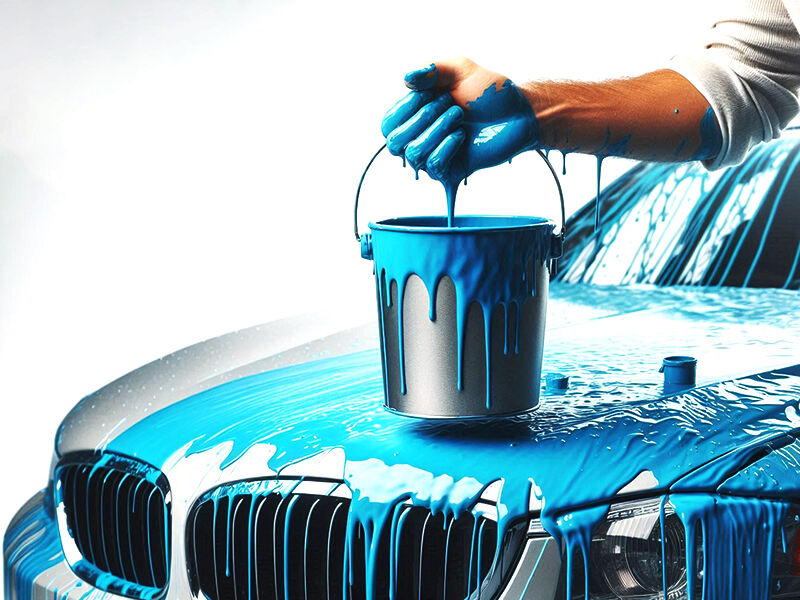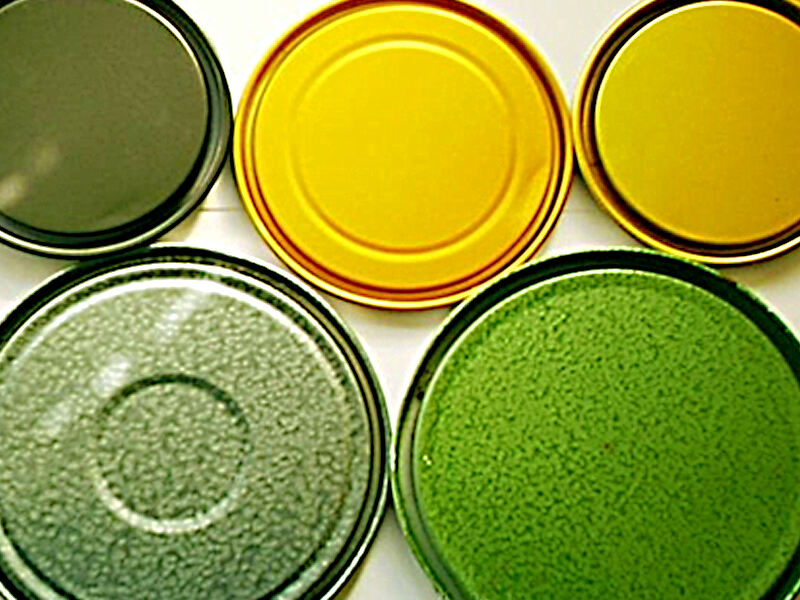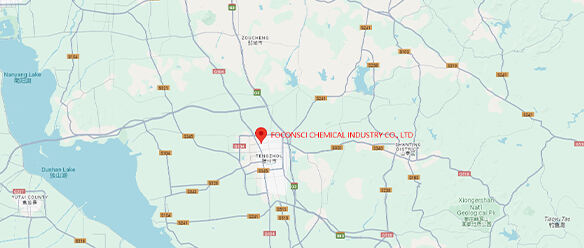塗料の世界では、 有機溶剤 が欠かせない「無名の英雄」です。これらは樹脂を溶解するだけでなく、塗料の粘度を調整し、流動性を向上させ、最終的に膜の形成を促進します。今日は、これらの溶剤が物理的および化学的な相互作用を通じて、どのようにして塗料システムを応用に適したものとし、塗料の最終性能にどのような影響を与えるのかを探っていきましょう。
樹脂の溶解: 均一な液体システムの提供
原則
溶剤の極性が樹脂の極性と一致すると、溶剤分子は樹脂分子の間に入り込み、水素結合、ファン・デル・ワールス力、または偶極相互作用などの分子間力を取り除き、その結果として樹脂を溶解します。
例えば、ケトン系溶剤(メチルエチルケトン、MEKなど)は、その極性が似ているためポリウレタン樹脂を効果的に溶解できます。
影響 する 要因
溶剤の極性: 極性のある溶剤(アルコール、ケトン、エステルなど)は極性のある樹脂(アルキド樹脂やポリウレタンなど)に適しており、非極性溶剤(トルエン、キシレンなど)は非極性樹脂(アクリル樹脂など)に適しています。
溶剤の溶解度パラメータ: ヒルデブランド溶解度パラメータが近い溶剤は樹脂とより互換性があります。
例
アクリル塗料 → エステル(例:ブチルアセテート)および芳香族炭化水素(例:キシレン)を使用して溶解します。
ポリウレタン塗料 → ケトン(例:MEK、MIBK)を使用して溶解します。
アルキド樹脂塗料 → アルコール(例:イソプロピルアルコール)およびケトン(例:アセトニトリル)を使用します。
粘度調整: 施工性能の最適化
原則
溶剤は樹脂と充填材の間の相互作用を減らし、塗料システム内の分子間力が低下することで粘度が下がり、流れ特性が改善されます。スプレーリング中、適度な粘度を持つ塗料は表面をより均一に覆い、塗装品質が向上します。
影響 する 要因
高揮発性溶剤(例:アセトン、MEK)は迅速に粘度を低下させ、速乾性塗料に適しています。
低揮発性溶剤(例:キシレン、ブチルアセテート)は塗料の流動性を維持し、ブラシやローラー塗装に最適です。
例
自動車用塗料(スプレー) → 低粘度が必要;非常に揮発性の高いケトン(例:MEK)を選択してください。
木工用塗料(ブラシ塗り) → 遅く蒸発するエステル(例:ブチルアセテート)を選んでください。
流れ特性の改善:ブラシ跡やオレンジピールの防止
原則
適量の溶剤は表面張力を低下させ、塗料が均一に広がることを可能にし、ブラシ跡、垂れ、または「オレンジピール」効果を最小限に抑えることができます。高揮発性と低揮発性の溶剤をバランスよく組み合わせることで、均一な溶剤の蒸発を確保し、表面が早く乾燥して内部が湿ったままになる(溶剤残留)などの問題を防ぐことができます。
影響 する 要因
溶剤の蒸発速度:
速すぎ → 泡、ピンホール、またはオレンジピールが発生する可能性あり。
遅すぎ → 垂れや塗布時の困難さにつながる可能性あり。
溶剤のブレンド比率:通常、速乾性、中間乾燥性、および遅乾性の溶剤を組み合わせて、塗料の平滑化を最適化します。
例
メタリックペイント(スプレー用) → 良好的な平滑化が必要;オレンジピールを避けるために遅乾性の溶剤(例:ブチルアセテート)を使用。
工業用防腐塗料 → 速乾性が必要;速乾性の溶剤(例:アセトン、MEK)を使用。
フィルム形成の促進:滑らかな塗膜のための均一な蒸発
原則
塗布後、溶剤が徐々に蒸発し、樹脂分子が接近して絡み合うことで、最終的に連続的で均一な膜が形成されます。適切にバランスの取れた溶剤の蒸発速度は、ピンホールやオレンジピール、気泡などの欠陥を避けるために膜形成プロセスを制御します。
影響 する 要因
蒸発速度:速すぎると、内部より表面が先に乾燥し、亀裂やピンホールが生じる可能性があります。
溶剤の相性:異なる溶剤の組み合わせは膜の均一性に影響を与えます。例えば、適量の低揮発性溶剤を加えることで過度な急速乾燥を防ぐことができます。
例
PUウッドコーティング → 均一な膜形成を確保するために、ゆっくりと蒸発するケトン+エステル(例:MIBK + ブチルアセテート)が必要です。
ニトロセルローススプレー塗料 → 幹燥時間を短縮するために、迅速に蒸発するケトン(例:MEK)が必要です。
結論
有機溶剤の塗料における役割は単なる「溶解」を超えており、粘度を調整し、流動性を向上させ、膜の形成を促進することで、塗料の施工性能と最終品質に直接影響を与えます。適切な溶剤の組み合わせを選択することで、塗料の施工性が向上するだけでなく、耐久性和仕上がりも向上します。
次に壁を塗ったり、表面にスプレーをかけるときに、これらの一見すると普通の液体たちに少し注目してみてください。彼らは静かに裏で驚くべき働きをしています!
詳細情報は、弊社のウェブサイトをご覧ください


 EN
EN
 AR
AR
 BG
BG
 HR
HR
 CS
CS
 DA
DA
 NL
NL
 FI
FI
 FR
FR
 DE
DE
 EL
EL
 HI
HI
 IT
IT
 JA
JA
 KO
KO
 NO
NO
 PL
PL
 PT
PT
 RO
RO
 RU
RU
 ES
ES
 SV
SV
 TL
TL
 IW
IW
 ID
ID
 LV
LV
 LT
LT
 SR
SR
 SK
SK
 VI
VI
 HU
HU
 TH
TH
 TR
TR
 GA
GA
 CY
CY
 KA
KA
 LA
LA
 MN
MN
 KK
KK
 LB
LB




